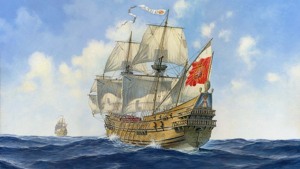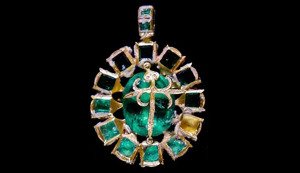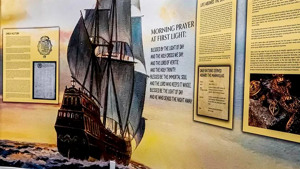Tavex uses cookies to ensure website functionality and improve your user experience. Collecting data from cookies helps us provide the best experience for you, keeps your account secure and allows us to personalise advert content. You can find out more in our cookie policy.
Please select what cookies you allow us to use
Cookies are small files of letters and digits downloaded and saved on your computer or another device (for instance, a mobile phone, a tablet) and saved in your browser while you visit a website. They can be used to track the pages you visit on the website, save the information you enter or remember your preferences such as language settings as long as you’re browsing the website.
| Cookie name | Cookie description | Cookie duration |
|---|---|---|
| tavex_cookie_consent | Stores cookie consent options selected | 60 weeks |
| tavex_customer | Tavex customer ID | 30 days |
| wp-wpml_current_language | Stores selected language | 1 day |
| AWSALB | AWS ALB sticky session cookie | 6 days |
| AWSALBCORS | AWS ALB sticky session cookie | 6 days |
| NO_CACHE | Used to disable page caching | 1 day |
| PHPSESSID | Identifier for PHP session | Session |
| latest_news | Helps to keep notifications relevant by storing the latest news shown | 29 days |
| latest_news_flash | Helps to keep notifications relevant by storing the latest news shown | 29 days |
| tavex_recently_viewed_products | List of recently viewed products | 1 day |
| tavex_compare_amount | Number of items in product comparison view | 1 day |
| Cookie name | Cookie description | Cookie duration |
|---|---|---|
| chart-widget-tab-*-*-* | Remembers last chart options (i.e currency, time period, etc) | 29 days |
| archive_layout | Stores selected product layout on category pages | 1 day |
| Cookie name | Cookie description | Cookie duration |
|---|---|---|
| cartstack.com-* | Used for tracking abandoned shopping carts | 1 year |
| _omappvp | Used by OptinMonster for determining new vs. returning visitors. Expires in 11 years | 11 years |
| _omappvs | Used by OptinMonster for determining when a new visitor becomes a returning visitor | Session |
| om* | Used by OptinMonster to track interactions with campaigns | Persistent |
| Cookie name | Cookie description | Cookie duration |
|---|---|---|
| _ga | Used to distinguish users | 2 years |
| _gid | Used to distinguish users | 24 hours |
| _ga_* | Used to persist session state | 2 years |
| _gac_* | Contains campaign related information | 90 days |
| _gat_gtag_* | Used to throttle request rate | 1 minute |
| _fbc | Facebook advertisement cookie | 2 years |
| _fbp | Facebook cookie for distinguishing unique users | 2 years |
The Discovery of a 336-Year-Old Shipwreck in the Bahamas

In the crystal-clear waters of the Bahamas, history has resurfaced in an extraordinary way.
The Nuestra Señora de las Maravillas, a legendary 17th-century Spanish galleon, was rediscovered, revealing a hidden trove of history’s mysteries. Weighing a hefty 891 tons and boasting two decks, this grand vessel suffered a devastating end on January 4, 1656, near the Little Bahama Bank.
Tragically, in a fateful encounter, it collided with another vessel from the Spanish fleet and descended into the depths, taking with it a vast collection of private treasures, and tragically the 650 people onboard.
This momentous find opens a window into a bygone era, offering a tangible connection to the rich maritime history that shaped our world. The ship’s untimely sinking not only marked a significant historical event but also set the stage for future generations to unearth and explore the wonders of our past.
The Shipwreck of Nuestra Señora de las Maravillas

(An artists illustration of the Nuestra Señora de las Maravillas, as it would have appeared sailing over 350 years ago)
The Significance of the Find
For over 360 years, the Maravillas remained an elusive treasure, with its remains scattered across the ocean floor, leaving no significant section intact. Despite efforts to salvage the estimated 3.5 million pieces of treasure between 1656 and the early 1990s, a significant portion remained undiscovered until recently.
This shipwreck is not just a collection of valuable items but a snapshot of history, revealing the opulence and peril of 17th-century maritime voyages.
The Role of Modern Technology
The breakthrough in uncovering this shipwreck was largely due to advanced technology.
Carl Allen, the founder of Allen Exploration, and his team utilised high-resolution magnetometers, enhanced GPS, and metal detecting tools, with official permission from the Bahamian government, to make these remarkable discoveries.
Their efforts have brought thousands of artefacts to the surface, including cannons, anchors, emeralds, amethysts, and gold coins.
We’ve recovered thousands of artefacts. Cannons, anchors, emeralds and amethysts … We’re up to about 3,000 silver coins and 25 gold coins
(Carl Allen, Founder Allen Exploration)
The Diverse Treasures Discovered
Among the recovered items in this Bahamas Shipwreck were Spanish olive jars, Chinese porcelain, iron rigging, and a silver sword handle belonging to the soldier Don Martin de Aranda y Gusmán. These artefacts not only have immense value but also provide a unique insight into the lives and trade practices of the period.
Particularly notable finds were the jewels from the sacred Order of Santiago, which stood out as star finds. These shipwreck jewels included a golden pendant with the Cross of Santiago, shaped like a scallop shell and adorned with what appears to be an Indian bezoar stone known for its healing properties.
Four pendants worn by the sacred Order of Santiago were recovered
(Nathaniel Harrington, Allen Exploration)

(One of the four pendants worn by the sacred Order of Santiago)
Unique Artefacts
One of the most remarkable finds was an 887-gram gold filigree chain made of 80 circular links and decorated with four-lobed rosette motifs, likely crafted in the Philippines.

This chain is significant as no exact replicas of it exist in other excavations or in museum collections. Such artefacts provide invaluable insights into colonial life and craftsmanship in the New World.
Historical and Cultural Importance
The recovery and analysis of these artefacts represent a significant leap in technology and a major advancement in understanding human behaviour and history. The items, potentially worth millions, are considered priceless due to their historical significance.
Allen Exploration archeologist Jim Sinclair emphasised the importance of this recovery in terms of archaeological and historical understanding.
Preservation and Exhibition

In a move to preserve and share this historical treasure, Allen Exploration has decided not to auction or sell any of the findings. Instead, these artefacts will become part of an exhibit at the Bahamas Maritime Museum in Freeport, Grand Bahama.
Opening in August 2022, the museum aims to showcase maritime history in the Bahamas, including the transatlantic slave trade and the Lucayan people, alongside the story of the Maravillas.
Takeaways
The discovery of the Nuestra Señora de las Maravillas shipwreck is a landmark event in maritime archaeology, brilliantly intertwining the threads of history, adventure, and technological innovation. This momentous find not only deepens our comprehension of historical maritime endeavours but also highlights the vast, unexplored narratives submerged beneath the ocean’s depths.
It underscores the persistent allure and mystery of the sea, inviting us to reconsider our historical knowledge and reminding us that the ocean still holds many secrets, waiting to be unveiled by future generations of explorers and historians.
This discovery is a testament to human curiosity and our enduring quest to uncover and understand the past, propelling forward the field of maritime archaeology into new, uncharted waters.

















